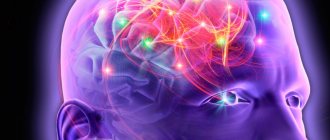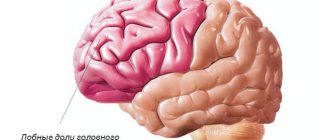Slader's syndrome is an inflammatory disease that affects the pterygopalatine nerve ganglion. Most often the disease has an infectious cause. It manifests itself as pain in the affected half of the face and is accompanied by numerous pronounced symptoms.
The pterygopalatine node is located in the pterygopalatine fossa, which is located in the temple area. It consists of three nerve roots. The branches of these nerve endings extend to the orbit, lacrimal gland and sphenoid sinus. They also innervate the nasal mucosa, ethmoid sinus, palate and upper jaw.
What is neuralgia of the pterygopalatine ganglion?
Slader's syndrome is an inflammatory lesion of the pterygopalatine nerve ganglion, predominantly of infectious etiology. It got its name from the name of the American scientist who first described it in 1908.
Other options for the name of Slader's syndrome are neuralgia of the pterygopalatine ganglion, ganglionitis of the pterygopalatine ganglion; ICD-10 code: G52.8 (Lesions of other specified cranial nerves).
In 1962, the International Committee on the Classification of Headaches, along with other “atypical” facial pains, classified the pterygopalatine ganglion syndrome into a special group - “pain of the lower part of the head,” or Horton’s syndrome of the lower type.
Etiology: causes of ganglionitis
Among the causes of the inflammatory process in the pterygopalatine node, several factors are distinguished:
- Infectious diseases. Among them are influenza, pleurisy, dysentery, typhoid, malaria, brucellosis, and syphilis.
- Traumatic defeat. For example, injury to the nose or its mucous membrane by foreign bodies.
- Inflammatory processes in the oral cavity, including carious lesions of the dentition.
- Inflammatory diseases of the ENT organs: purulent otitis, chronic rhinitis, tonsillitis, pharyngitis.
- Tumor formations in the maxillary areas.
- Long-term use of corticosteroid drugs.
- Diabetic disease.
- Viral infection. Often, damage to the pterygopalatine node occurs as a consequence of herpetic disease (herpes zoster) or hepatitis.
Clinical picture: symptoms
The symptomatic picture of ganglionitis (Sluder syndrome) is usually due to the underlying cause of the inflammatory process. It also matters where the initial inflammation is located. There are several typical manifestations of this disease.
When examining a patient, the doctor pays attention to the following symptoms:
- One half of the face has a paler or, on the contrary, redder tint.
- Edema.
- Excessive secretion of liquid secretion from the eyes (lacrimation), nose, mouth (hypersalivation) appears on the side where the lesion occurred.
- The patient may experience shortness of breath and suffocation.
- A detailed history taking reveals changes in the functioning of taste buds, because The pterygopalatine ganglion captures part of the facial nerve. A bitter sensation may appear on the base of the tongue and on the back of it.
- Sometimes the disease is accompanied by fainting states and hypertensive crises.
- Muscle tone decreases.
The disease may also be accompanied by symptoms characteristic of ophthalmological diseases: photophobia, swelling of the eyelid, blepharospasm, conjunctivitis, exophthalmos.
Most often, patients themselves complain of pain. Its peculiarity will be that the pain is wave-like in nature. When characterizing the pain syndrome, the patient may say that he experiences a burning sensation, aching, or sensations similar to pain from a burn or severe cut.
This feeling occurs in the front part of the head (in the eye, in the teeth, in the jaws, in the bridge of the nose, tongue, palatine part of the mouth), in the back of the head, near the ear, in the neck, in the hands. Usually pain bothers a person at night.
Doctor, it’s strange to me: 10 rare psychopathological syndromes
Depression, autism, schizophrenia - these words are familiar to many. However, there are disorders that are not so common: Paris and Stockholm syndromes, Diogenes and Dorian Gray syndromes, hospitalism, emotional burnout and others. T&P collected 10 rare syndromes from the field of psychotherapy and psychiatry.
Anxiety at the sight of the French.
A disorder called Paris syndrome is most common among Japanese tourists. According to the Japanese Foreign Ministry, every year at least 12 of them seek the help of a psychotherapist during or after a trip to France and other Western European countries. Travelers experience culture shock, complain about the aggressive behavior of local residents and service personnel, and suffer from the fact that their expectations and investments of effort and money did not justify themselves. For some, this ends in severe psychosis, which requires months of therapy. “For us, Paris is a dream city,” says one of the victims. — All French people are beautiful and graceful. But when we meet them face to face, we realize that we are deeply mistaken. We are completely different, both in character and in our outlook on life.”
Paris syndrome was identified in 1986 by Japanese psychiatrist Hiroaki Ota, who worked in France. Ota found that it is characterized by a sharply emerging delusional disorder, hallucinations, delusions of persecution, derealization (disorder of perception of others), depersonalization (disorder of perception of one’s own body), anxiety, as well as nausea, tachycardia and increased sweating.
The Japanese embassies operate a 24-hour hotline to help people suffering from Paris syndrome. A similar disorder occurs among Chinese travelers, who also tend to romanticize Western Europe. “Don’t put your phone on a table in a cafe and don’t wear bright jewelry!” - warns the Chinese guide to Paris for 2013.
Hallucinations in museums.
Stendhal syndrome occurs when viewing works of art in museums and art galleries. Its symptoms are somewhat reminiscent of the Paris syndrome: dizziness, hallucinations, tachycardia, loss of spatial orientation, fainting, hysteria, destructive behavior. This disorder can also occur while observing natural phenomena, animals, listening to music from the Romantic era, and meeting incredibly beautiful people.
The French writer talks about the crisis he experienced in his book Naples and Florence: A Journey from Milan to Reggio. “When I left the Church of the Holy Cross,” writes Stendhal, “my heart began to beat, it seemed to me that the source of life had dried up, I walked, afraid of collapsing to the ground... I saw masterpieces of art generated by the energy of passion, after which everything became meaningless, small, limited, so when the wind of passions ceases to inflate the sails that push the human soul forward, then it becomes devoid of passions, and therefore of vices and virtues.”
Berndnaut Smilde
Stendhal syndrome was first described in 1979 by Italian psychiatrist Graziella Magherini. She studied more than a hundred identical cases of this disorder among tourists who visited Florence. At the same time, Magherini noted that travelers from North America and Asia are not susceptible to Stendhal syndrome due to the fact that local works of art are not associated with their culture, and Italians are immune because they become acquainted with them in childhood. The psychiatrist noticed that single foreigners with a classical or religious education are most susceptible to the disease: men and women.
Stendhal syndrome indeed most often occurs among visitors to museums in Florence, especially the Uffizi Gallery. The sick person suddenly finds himself struck to the core by the beauty of a work of art and begins to perceive the emotions put into it by the artist with extraordinary acuteness. In some cases, this even results in attempts to tear down a painting or damage a statue. That is why, despite the fact that Stendhal syndrome is quite rare, employees of Florentine museums are taught to behave correctly with its victims.
Hospital illness.
A psychopathological disorder that occurs during and after a stay in government and public institutions is commonly called hospitalism. It appears in children and adults who have to live for a long time in hospitals, orphanages, nurseries and nursing homes.
The concept of “hospitalism” was first used in 1945 by the Austro-American psychoanalyst Rene Spits, who studied the behavior and condition of children undergoing treatment. Pediatric hospitalism is characterized by noticeable physical and mental retardation, emotional insufficiency, meaningless movements (for example, rocking), weak crying, apathy, weight loss, lack of visual tracking of others and vocal responses to affection. This disorder inhibits the child's intellectual and emotional development, distorts his concept of self, and has a negative impact on his health. In severe forms, hospitalism can lead to infantile marasmus, chronic infections and even death.
In adulthood, this disorder usually occurs in older patients who have been hospitalized for more than 10–15 months. Adult hospitalism is characterized by social maladaptation, loss of interest in work and loss of work skills, deterioration of contact with others and the desire to recognize one’s illness as chronic. Patients in psychiatric departments of hospitals are especially susceptible to hospitalization. Researchers note that often a stay in a hospital harms such patients more than the mental illness itself that caused them to be there.
Self-neglect.
Patients with Diogenes syndrome are pathological hoarders who suffer from extreme self-neglect, apathy, emotional lability, suspiciousness and lack of shame. All this often turns against them. Diogenes syndrome often leads to social isolation, which increases as a person's home becomes more cluttered and their appearance changes as a result of the disease. Such people accumulate a huge amount of unnecessary things, are indifferent to dirt and garbage, are unfriendly to visitors and, as a rule, one way or another resist attempts to help them change their lifestyle. However, they are not always beggars: they simply prefer not to spend money.
Diogenes syndrome is thought to result from problems with the anterior cingulate cortex and insula, which are typically involved in decision making. American researchers found that at rest, such patients showed abnormal activity in these areas, while at moments when a decision really had to be made, their work died down. Diogenes syndrome can result from depression and dementia. In psychiatric practice, it is also called Plyushkin syndrome, senile squalor syndrome and social collapse. Today its prevalence in the world is about 3%. Most often, this syndrome manifests itself in mature and elderly people.
Interestingly, the ancient Greek philosopher Diogenes did not appear to suffer from the disorder that bears his name. Diogenes adhered to a strategy of extreme minimalism and, according to legend, lived in a barrel, but at the same time remained socially active, had a sharp mind and did not accumulate property.
Morbid cult of youth.
Dorian Gray syndrome, named after the main character of Oscar Wilde's novel The Picture of Dorian Gray, is not universally recognized as a mental disorder today. It was first described in 2001, and many experts consider it more of a cultural and social phenomenon. However, this condition can be dangerous as it can lead to depression and suicide attempts in some cases.
Cerise Doucède
Patients with Dorian Gray syndrome experience a panicky fear of aging and abuse cosmetic procedures and plastic surgery, without caring about the risks. Sometimes they also compensate for their own decline with a passion for youth symbols and clothing. People with Dorian Gray syndrome experience narcissism, immaturity and dysmorphic disorder, when minor defects in appearance cause constant severe anxiety, fear, melancholy, and decreased self-esteem. Dorian Gray syndrome can occur in famous actors and musicians due to the important role physical appearance plays in their profession.
The war between good and evil.
Manichaean delirium is a severe painful condition in which the patient feels that there is a struggle between light and dark forces around him, and the stake in this struggle is his soul and body. Some experts consider Manichaean delusions to be an acute type of antagonistic delusion or classify them as delusions of grandeur. Others consider this disorder as one of the stages of oneiroid - a dreamlike, fantastically delusional state of darkness.
A person who suffers from Manichaean delusion feels himself on the verge between good and evil. He is tormented by mutually exclusive auditory hallucinations and fear of an imminent catastrophe. This is how one of the patients describes her condition: “I go to church twice a day and always carry the Bible with me, because it’s difficult for me to figure everything out on my own. At first I didn’t know what was right and what was sin. Then I realized that there is God in everything and there is a devil in everything. God calms me down, but the devil tempts me. I drink, for example, water, took an extra sip - it’s a sin, God helps to atone - I read prayers, but then two voices appeared, one of God, the other of the devil, and they began to argue with each other and fight for my soul, and I got confused.” At the same time, a person suffering from delusions of Manichaeism appears healthy outwardly, and this makes his disorder dangerous to others. Experts believe that people susceptible to Manichaean delirium can become terrorists and martyrs. It has also been suggested that Adolf Hitler and George W. Bush suffered from this disorder.
Love for the aggressor.
Stockholm syndrome is not included in any international list of mental illnesses, but it is perhaps the most famous “rare disorder”. This condition occurs when the victim begins to sympathize with his captor, experience one-sided or mutual sympathy for him, and even identify himself with him. Some experts consider Stockholm syndrome a natural reaction to events that traumatize the psyche. In world psychotherapeutic practice, everyday Stockholm syndrome is also distinguished, which occurs against the background of domestic violence.
The desire to identify with the aggressor was first described by Anna Freud, daughter of Sigmund Freud, in 1936. And after the hostage crisis at the Kreditbanken bank in Stockholm in 1976, this syndrome received its modern name. Then, former prisoner Jan Erik Olsson single-handedly seized the bank, took four of its employees hostage and held them for six days. During this time, his cellmate Clark Olofsson managed to join him, who was taken to the bank at the request of the criminal. The hostages were freed during a special operation using gas, but after that they said that they were afraid not of the hostage, but of the police. Olofsson was able to prove in court that he did not help the terrorist, but, on the contrary, tried to save people. The charges against him were dropped and he was released, after which Olofsson met and became friends with one of the hostages. Ullson was sentenced to 10 years in prison. In prison he received several letters of admiration from his victims.
Jean-Yves Lemoigne
Experts say that Stockholm syndrome occurs quite rarely: according to FBI data obtained after analyzing 1,200 successful hostage-taking attempts, victims developed it in only 8% of cases. However, during operations to free captured people, negotiators encourage the development of mutual sympathy between terrorists and their victims. This reduces the risk of hostages dying and increases their chances of being released.
Islands of genius.
Savant syndrome occurs in people with autism and other mental illnesses, and can also result from traumatic brain injury. In this case, against the background of the general limitations of the individual, an “island of genius” appears: phenomenal memory and incredible abilities in the field of music, arithmetic, fine arts, cartography, architecture of three-dimensional models or in another field. The savant is able to sing all the arias he heard, leaving the opera, name the day of the week that will fall on January 1, 3001, and carry out mental calculations usually performed by a computer. At the same time, his other abilities and skills may be very poorly developed, even to the point of mental retardation.
American actor Dustin Hoffman won an Oscar for his role as savant Raymond Babbitt in the film Rain Man. To fulfill it, Hoffman spent a long time communicating with Kim Peak, a savant with phenomenal memory and reading abilities, which he had against the background of many pathologies. Pick remembered maps of all US cities in detail and could give advice on how to get through each of them, and it took him only 8-10 seconds to read one page of text.
Other people's thoughts.
Recoil psychosis, or hypersensitivity psychosis, occurs in schizophrenia following the withdrawal of antipsychotics and metoclopramide, which is used to treat migraines. With this disorder, patients develop dopamine receptor hypersensitivity. The neurotransmitter dopamine plays a large role in the brain's reward system and produces feelings of pleasure and satisfaction.
With recoil psychosis, a person has the feeling that he senses his own and other people’s thoughts that “enter into him.” Such a patient suffers from hallucinations and delusions, involuntary movements and tremors. This disorder was first described in 1981. Today, to prevent it, experts advise not to prescribe antipsychotics for anxiety and affective disorders, limiting the scope of their use only to the treatment of schizophrenia.
Fatigue of the vulnerable.
Burnout syndrome most often develops among those who work in prisons, hospitals and other government institutions. This is increasing emotional exhaustion, which leads to deep indifference, dehumanization, a feeling of one’s own professional failure, depersonalization, decreased quality of life and psychosomatic illnesses.
In the list of the International Classification of Diseases ICD-10, burnout syndrome is called overwork. In Russia it is also called professional burnout. Today there are several Russian and foreign questionnaires that can identify this disorder in employees. It is believed that people who are prone to empathy and an idealistic attitude towards work, but at the same time unstable and immersed in daydreams, are more susceptible to burnout.
How is the problem diagnosed?
Slüder syndrome can be confused with other diseases that have a similar symptomatic picture. In addition, pain often radiates to other nearby organs and parts of the body.
Therefore, for proper further treatment, it is important to accurately differentiate this disease from others. Diagnosing yourself and self-medicating can be extremely dangerous .
First of all, you should contact a general practitioner, who will refer the patient to see a neurologist. The doctor will conduct a detailed survey of the patient, visually assess the patient’s condition, palpate sensitive areas and, based on the collected anamnestic data, make a diagnosis.
Also, to differentiate the disease, the patient may be directed to undergo a series of examinations and tests :
- computer and magnetic resonance imaging;
- Ultrasound;
- cardiogram;
- X-ray examination.
To diagnose inflammation of the pterygopalatine node, the method of application to the posterior parts of the nasal cavity with a solution of dicaine and adrenaline with a concentration of 0.1% is also used.
If the pain stops after such a procedure, this indicates that the pathological process occurs precisely in the pterygopalatine node. There are a number of signs that make it possible to distinguish Slader's syndrome from neuralgia of the trigeminal and glossopharyngeal nerves. In the case of the latter, a painful attack can be caused by some local irritation.
Ganglionitis can be confused with cluster headache . Its distinctive features: has a pulsating character in the temporal zone; there is a sensation as if the eyeball is being squeezed out of the socket. It arises suddenly and ends just as abruptly. Attacks of pain occur in series.
Ganglionitis should also be distinguished from cancer, traumatic injuries, heart disease and gastrointestinal tract diseases. Here, various survey methods will provide great information.
Find out more about the types and forms of neuralgia:
- external cutaneous nerve of the thigh and pelvic;
- inflammation of the brachial and sciatic nerves;
- occipital and postherpetic.
Xenon therapy: effective elimination of post-Covid syndrome
EL Clinic offers a wide range of services, including xenon therapy . Xenon therapy is the use of xenon, which is an inert gas, for the treatment of diseases of the nervous and cardiovascular systems. Xenon, which is used for medical purposes in the form of inhalations, has exceptional physicochemical and pharmacological properties.
It is absolutely safe, does not cause allergies, has no toxic properties, and, due to the absence of a harmful effect on the nervous system, has no contraindications for use. In addition, there are no age restrictions for its use either.
Xenon has an anti-inflammatory, analgesic and sedative effect. Due to the above properties, it is often used in rehabilitation programs of medical institutions. It is not addictive, so the course of its use can be long.
Treatment
In the acute period of the disease, pain relief comes first . For this purpose, various medications are used. Anesthetics are used to lubricate the mucous membrane of the posterior wall of the nasal cavity.
Also, to eliminate pain, intravenous infusion of analgin solution with diphenhydramine and trimecaine is used . Intramuscular injections are made with a solution of droperidol and fentanyl. Novocaine blockade of the pterygopalatine node is performed.
If the cause of ganglionitis of the pterygopalatine node is an infectious-inflammatory disease of other organs, it is treated. The oral and nasopharyngeal cavities are sanitized. Other inflammatory diseases are treated with antibiotics and immunomodulators.
It is most advisable to carry out complex therapy aimed at eliminating not only the pain syndrome, but also the accompanying symptoms.
The patient is prescribed the following types of medications:
- vitamin preparations of group B (thiamine chloride, cyanocobalamin);
- anti-inflammatory drugs and pain relievers;
- NSAIDs;
- local anesthetics to the affected area (lidocaine, novocaine);
- external warming ointments and creams;
- To stabilize the patient's mental state, antidepressants (duloxetine) and tranquilizers are recommended.
Physiotherapeutic procedures have proven themselves well in the treatment of Slader syndrome:
- intranasal electrophoresis;
- diadynamic currents;
- acupuncture;
- UHF;
- ultrasound;
- laser therapy;
- massage;
- physiotherapy.
The last two points require caution in application, because in some cases may have the opposite effect.
Literature
- Coultas JA et al. Lemierre's syndrome: recognizing a typical presentation of a rare condition //Case reports in infectious diseases. – 2015. – T. 2015.
- Schubert AD et al. Septic thrombosis of the internal jugular vein: Lemierre's syndrome revisited //The Laryngoscope. – 2015. – T. 125. – No. 4. – pp. 863-868.
- Wong AP, Duggins ML, Neil T. Internal jugular vein septic thrombophlebitis (lemierre syndrome) as a complication of pharyngitis //The Journal of the American Board of Family Medicine. – 2015. – T. 28. – No. 3. – pp. 425-430.
- Eilbert W., Singla N. Lemierre's syndrome //International journal of emergency medicine. – 2013. – T. 6. – No. 1. – P. 40.
- Johannesen KM, Bodtger U. Lemierre's syndrome: current perspectives on diagnosis and management //Infection and drug resistance. – 2021. – T. 9. – P. 221.
Prognosis and prevention
Relapses of the disease do not always disappear as a result of treatment, but the clinical picture changes significantly. Many symptoms disappear or appear much less frequently. Treatment must be comprehensive, adequate and timely, only in this case a positive result is possible.
Among preventive measures, there are, first of all, measures aimed at preventing the occurrence of infectious and inflammatory diseases of nearby organs. In this regard, doctors recommend avoiding hypothermia and drafts, which can lead to otitis media, tonsillitis, and pharyngitis.
It is also a good idea to harden the body and increase immunity. In the period between exacerbations, it is important to prevent repeated inflammatory processes.
Since pulpitis and other diseases of the oral cavity often cause damage to the pterygopalatine node, teeth and periodontal diseases should be treated in a timely manner .
It is also worth avoiding, if possible, situations that can lead to trauma to the nasal cavity and its mucous membranes.
An assessment of damage to the pterygopalatine ganglion is possible only after thorough clinical, laboratory and instrumental studies. A correct diagnosis is the basis for successful treatment.










